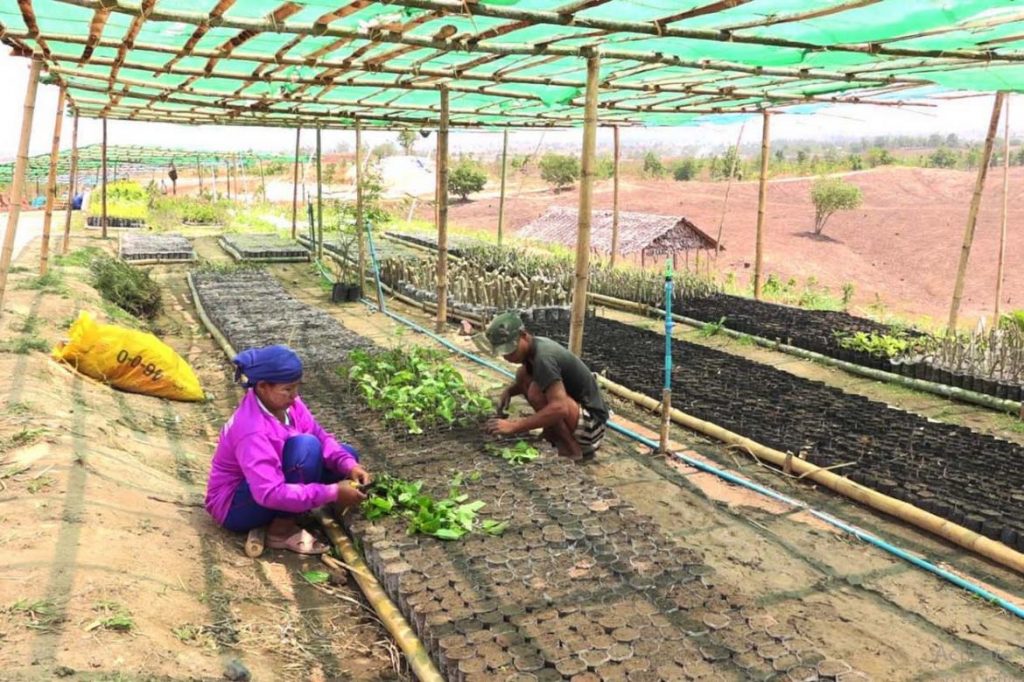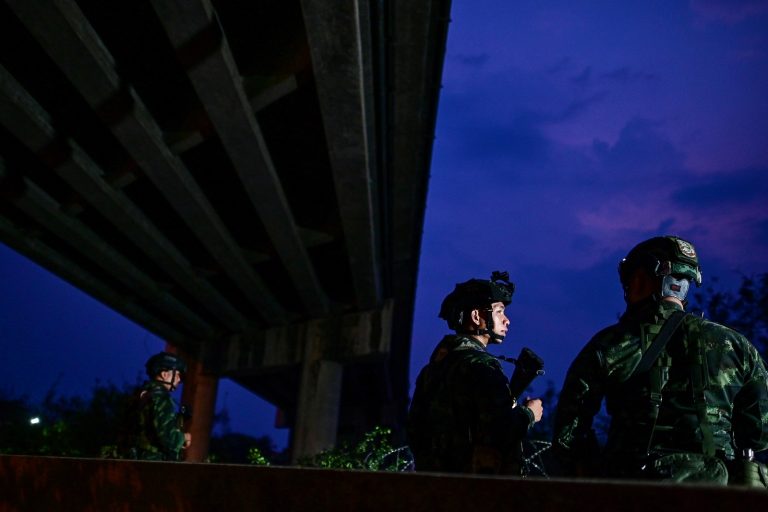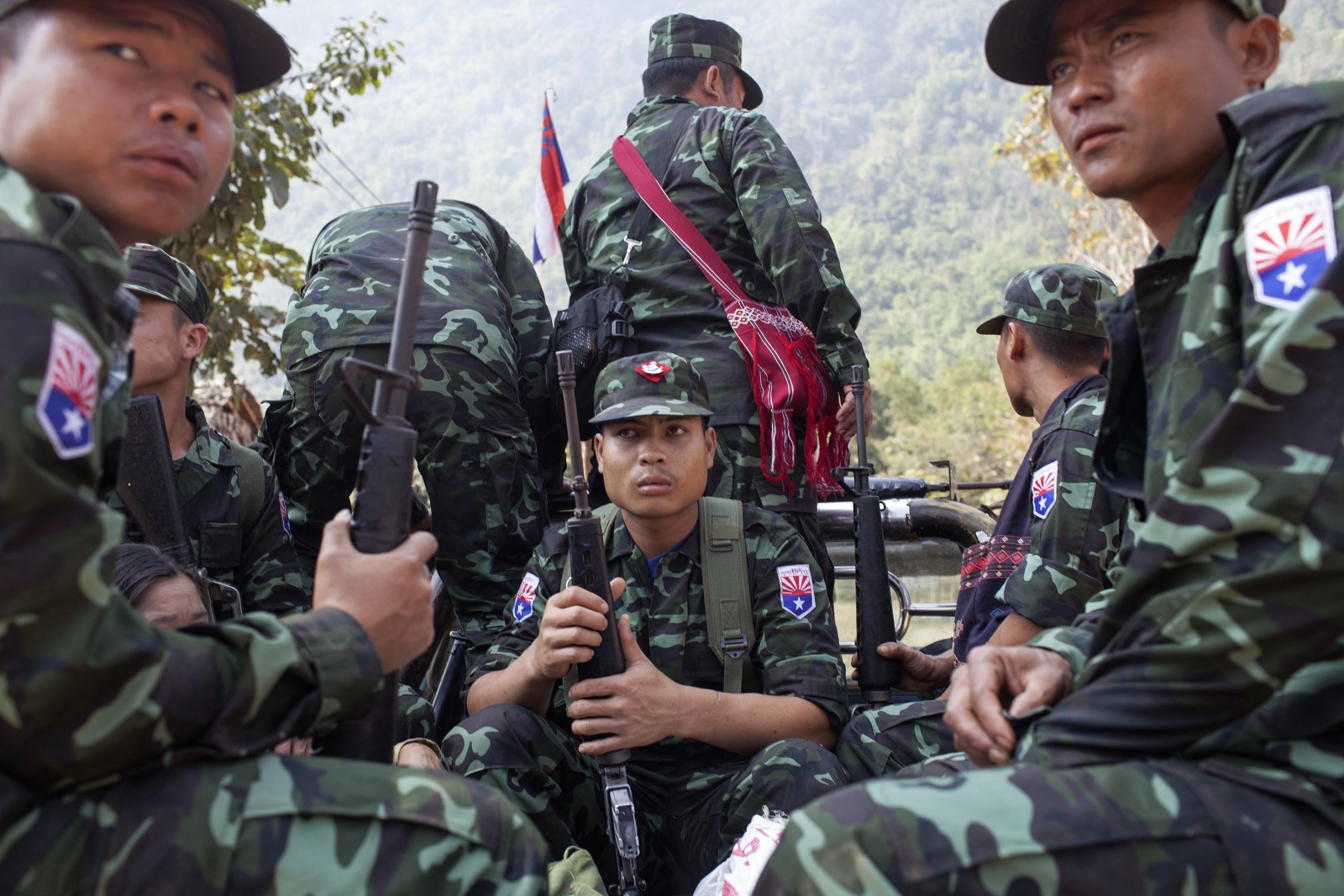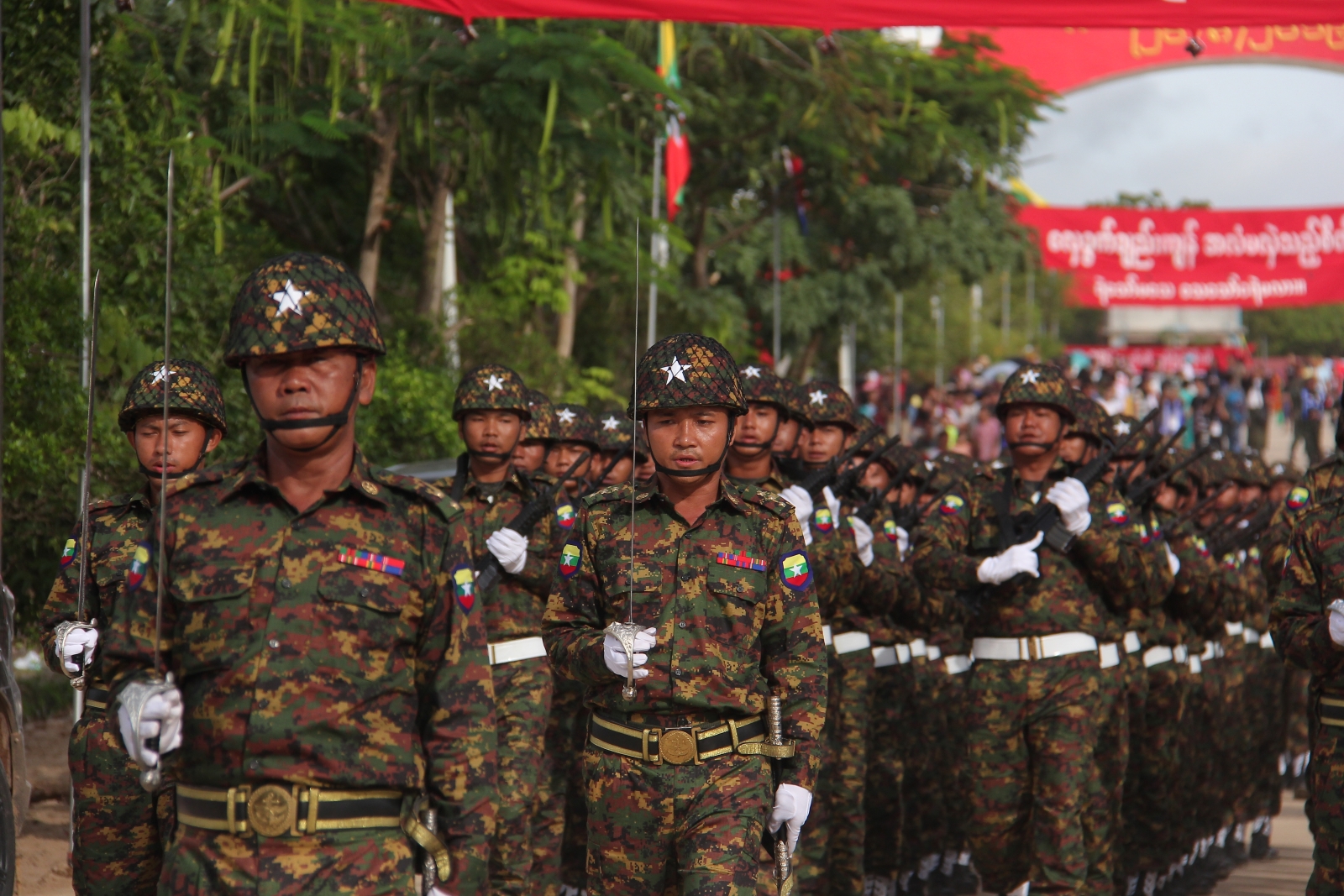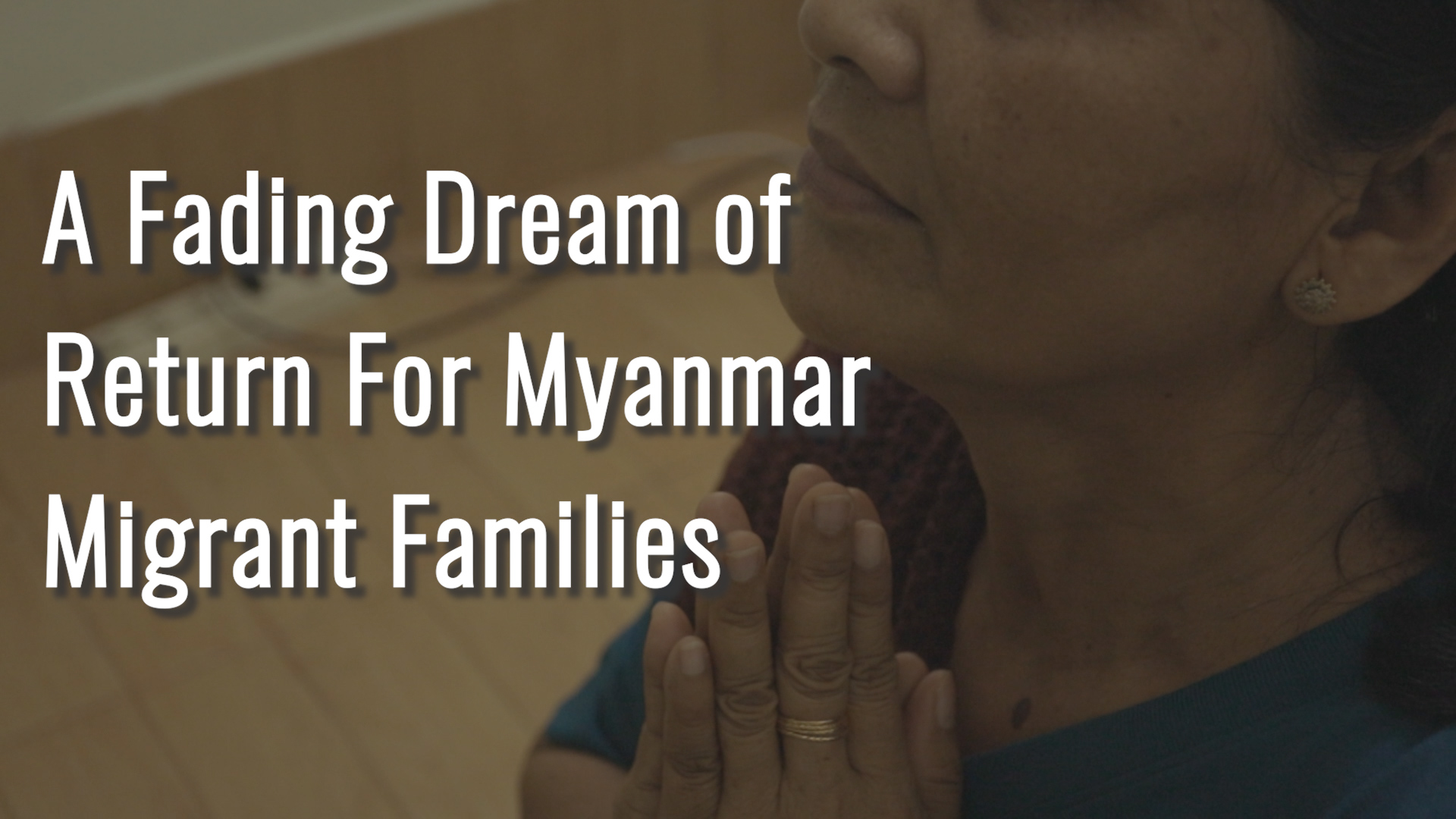A lack of job opportunities is one of the biggest concerns of refugees who have returned voluntarily from camps in Thailand where many lived for decades.
By SA EH SUU | FRONTIER
IT’S BEEN a tough four months since U Saw Lawi, 54, and his family returned to Myanmar after spending nine years as refugees in Thailand.
Saw Lawi, a Lisu, had been living in the Umpiem refugee camp south of the Thai border town of Mae Sot since 2009.
In 2009, he was struggling to make a living polishing gems at Mogok, the Mandalay Region town famed for its rubies and sapphires, when his wife became ill. He couldn’t afford the treatment so he contacted his son, who was working in Mae Sot, and asked him to send money. The young man instead advised that they travel to Mae Sot, opposite Myanmar’s Myawaddy, so his mother could be treated for free at the Mae Tao Clinic, which was founded in 1988 by Dr Cynthia Maung, who has won many international awards for her humanitarianism. They arrived in Mae Sot later that year.
After his wife recovered, they went to live at Umpiem, one of nine camps along the border with Thailand that were housing 93,534 mainly Karen refugees on July 31, show figures from the United Nations refugee agency, UNHCR. Umpiem was home to 10,793 refugees.
Support more independent journalism like this. Sign up to be a Frontier member.
Life in the camps has become increasingly difficult in recent years because of a decline in donor funding. Almost 10 years after they left Myanmar, Saw Lawi and his family decided to return under a voluntary repatriation programme launched by Myanmar and Thailand in cooperation with UNHCR. They were among 575 people who returned to Myanmar from the camps in Thailand in February; more than 1,000 have returned in four batches since the programme began three years ago, according to Myanmar government figures.
Saw Lawi and his family were resettled at Lay Kay Kaw Myothit, or “Lay Kaw Kaw New Town”, in Kayin State’s Myawaddy Township. Saw Lawi said he worries about the future in Myanmar, mainly because of limited job opportunities. He is making a modest living breeding livestock.
“Because I don’t have a regular job I am worried for my family,” he told Frontier during a recent visit to the town. “We don’t have any jobs for the long term, and I’m worried what job I might do in the future.”
Lay Kay Kaw Myothit was established in 2014 under an agreement between the government and the Karen National Union to accommodate people displaced by the decades-long conflict between the Tatmadaw and the KNU’s armed wing, the Karen National Liberation Army.
The new town has been established on a site covering about 728 hectares (1,800 acres) and is home to about 3,000 people, most of them refugees returned from Thailand or people displaced by conflict elsewhere in Kayin. The project is supported by Japan’s Nippon Foundation.
As well as limited job opportunities, residents of the new town say they also lack access to clean water and worry about the security situation.
Most residents of Lay Kay Kaw Myothit support themselves by raising livestock or doing other farm work, and among them is Saw Aung Min.
“For the time being, I raise pigs and do agricultural work,” he told Frontier. “I also run a motorbike taxi, but not everyday,” he said. “It is not a densely populated area, but more people might come and live here.”
Lay Kay Kaw administrator Saw Htay Myint Aung acknowledged the concern over a lack of job opportunities and said the authorities were planning to host vocational training courses for returnees as well as develop a resort hotel to support employment creation. The town’s residents were also being encouraged to sell farm produce.
“We will [also] take action to enable those who live here to get legal documents so they can go abroad for work,” Htay Myint Aung said. “Secondly, we will invite businesspeople to come here and invest, especially for locally-sourced crops to be sold.”
Htay Myint Aung said there would be more jobs for Lay Kay Kaw Myothit if the local economy was developed and he has suggested that the authorities support the establishment of ecotourism activities in Myawaddy Township.
With international donor support for residents of the camps in Thailand expected to continue declining, there are concerns that the employment challenges confronting residents of Lay Kay Kaw Myothit will worsen as more refugees return to Myanmar.
Residents want the government to help them develop their own businesses.
“It would be better for me if I had a small private business,” said Lay Kay Kaw Myothit resident, Saw Le Wee. “I’d be more motivated if I had my own business.”


